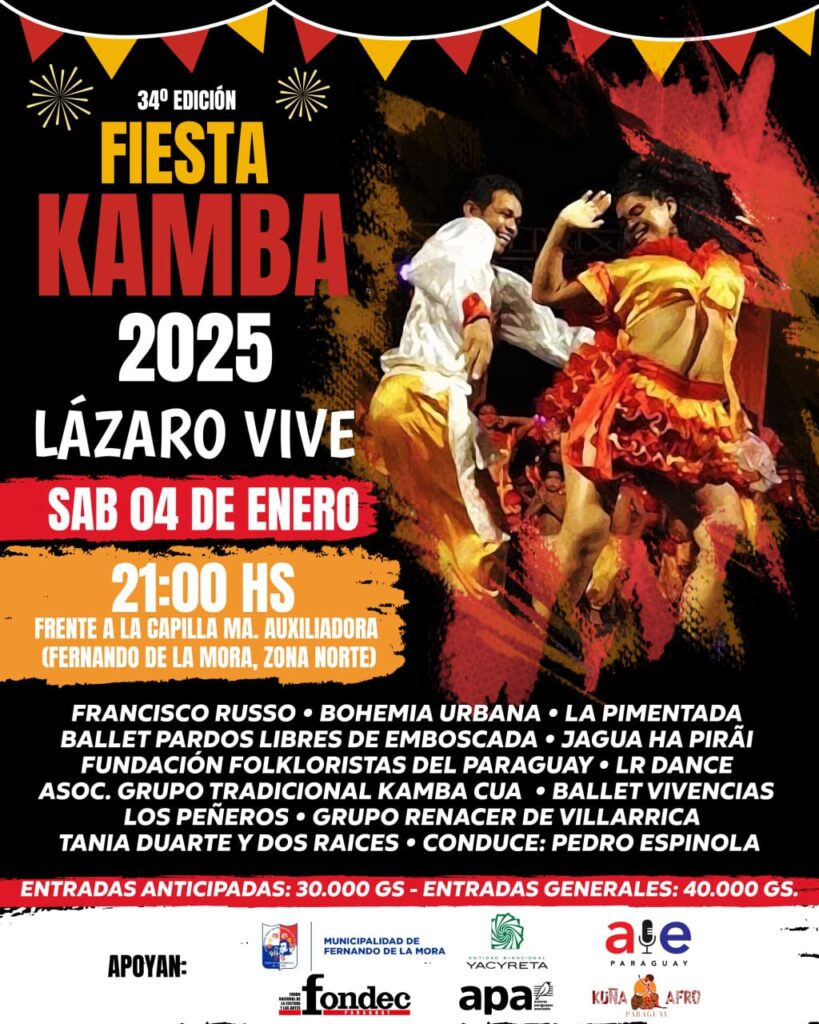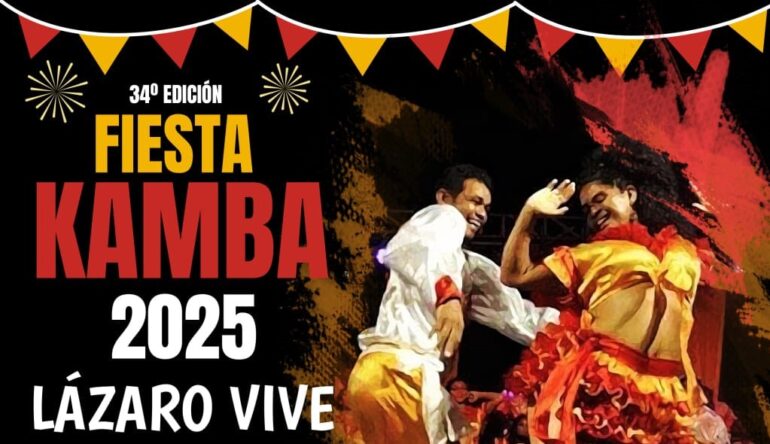This Saturday, January 4, will be the 34th edition of the Kamba Festival, organised by the Traditional Kamba cua Group Association (Kamba cua Ballet of Maestro Lázaro Medina).
The celebration in honor of Saint Balthazar will be held in front of the María Auxiliadora Chapel, located on the streets of Capitán Rivas and 6 de enero in the city of Fernando de la Mora (North Zone), starting at 9:00 p.m.
The artists Francisco Russo, Bohemia Urbana, La Pimentada, the Pardos Libres from Emboscada, the Renacer group from Villarrica, Tania Duarte and Dos Raíces, the Folklorists Foundation of Paraguay, LR Dance and the Vivencias Ballet, and Los Peñeros will be present.
And as expected, the Kamba Cua Traditional Group Association will be present with the most representative display of rhythms and dances in honor of San Baltazar.
This edition is possible thanks to the support of the Municipality of Fernando de la Mora. The Yacyreta Binational Entity, AIE Paraguay, APA, Kuña Afro and Fondec.
Kamba Cua Ballet by Larazo Medina
Afro-Paraguayan cultural group, formed in 1976. The “Kamba Cua” community, located in Loma Campamento, was formed by slaves – men and women – who accompanied the Uruguayan General José de Gervasio Artigas as lancers.
One of his descendants, Mr. Santiago Medina, rescued some of the rhythms, dances and traditions of his ancestors and passed them on to his descendants. His son, Lázaro Medina, gave impetus to the group and the community, creating the “Kamba Festival” to promote their cultural identity.
In its nearly 50 years of existence, the group has brought Afro-Paraguayan culture to national and international stages in Uruguay, Argentina, Chile and Brazil. It has received awards such as the “Golden Charrúa” for the best group at the Durazno Festival, the “Ministry of Tourism Award” and the “Critics Award” from the newspaper El País of Uruguay.
The group is currently directed by Benito Medina. It has more than 100 members, including musicians, drummers and dancers, distributed in groups of children, youth and the main adult ballet.
The repertoire is made up of dances based on the rhythms: “Santo sapatu”, “Kuarahy”, “Tuja’i”, “Guarimba Galopa”, “San Baltazar” and “Pitiki pitiki”.



